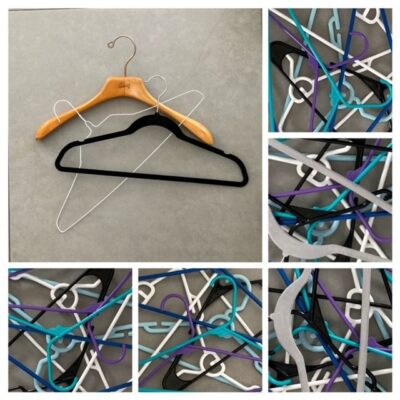You Are Not the Person You Were Yesterday

You Are Not the Person You Were Yesterday
By Deb Yamanaka
There is a basket in my closet in which its sole purpose is to catch and hold clothes I’ve decided not to keep.
Three kinds of hangers live in my home. Wood ones for coats. Black velvet covered thin hangers for my remaining clothes. Wire ones that are there temporarily thanks to the dry cleaners and which I get rid of as soon as possible.
If I run out of hangers, something has to go. I ask myself a few questions. Does it fit? Do I enjoy wearing it? Do I wear it? Will I wear it? Do I feel like that item of clothing works for me in my world? With a limited number of hangers, does it make the cut? Inherent in this process is accepting that fact that what was once true no longer is.
Sometimes the reason the item is leaving my closet is that it has been damaged in some way and it is beyond repair. It no longer serves me, and it is unlikely to serve someone else.
Sometimes it just no longer fits me. It might fit someone else though and so that item goes into the basket which eventually heads to a charitable organization.
The same applies to something that might fit but for some reason just doesn’t work for me anymore. Maybe I imagined myself looking fantastic in it and…well…who am I kidding – I’m a grandmother with the figure to match and my glittery clubbing days are long gone – along with the slim build of my early 20’s. Okay, I bought that top last year. Forgive me for sometimes forgetting that I’m not 20 and it’s not the ‘80’s.
Sometimes what used to work just… doesn’t… anymore.
Which is exactly the same thing for companies. We talk a lot in the industry about modernizing. I’ve been in the tech world since 1983 – four decades. I first heard about organizations modernizing then – as we were bringing in word processing systems that did more than a typewriter and frankly had a profound impact on how offices ran. Granted, we still printed everything out and stored it in massive file cabinets but there was a new era coming and we were modernizing at the speed of light. Or at least 2–5-year development life cycles.
I’m a Gen-X’er. Modernization was literally the only way we had to move forward (and up) in a working world heavily invested in 20+ year careers in a single organization and people who stayed in their positions for more than a decade. We looked up and wondered where we fit. As we adopted (or invented) new tools and technologies, we made a way for ourselves. Often, instead of moving up we decided to move sideways and, in the process, do more and more.
The guidance we were given from the more seasoned among us was to “pay our dues” and “be patient.”
We weren’t that much different from the generation before us, who resisted the establishment of their parents. Most of us are young enough to recognize the exact same wants, needs, and desires in the Milennials and Gen-Z’ers who are in the workforce with us today.
We’re all in the workforce together now: Baby-boomers, Gen-X’ers, Millennials, and Gen-Z. We even have a few Traditionalists/War Babies in our ranks. And we’re all working in companies that reflect the values and structures of their creators and those who have inspired and led those companies through their own generational changes and modernization efforts.
We’re modernizing our corporate wardrobes, hoping to find something that looks good on us, and owning up to the fact that what once worked for us doesn’t any more. Because we aren’t who we used to be. That doesn’t mean we’re throwing out the entire wardrobe. Just the parts that no longer serve us. In doing so we can add new and better things (at least for now) via our reserve of hangers.
Steve Jobs – the Boomer we Gen-X’ers adopted as our own – once said: “Your time is limited, so don’t waste it living someone else’s life.” I think that also includes our former selves and the companies we lead.
